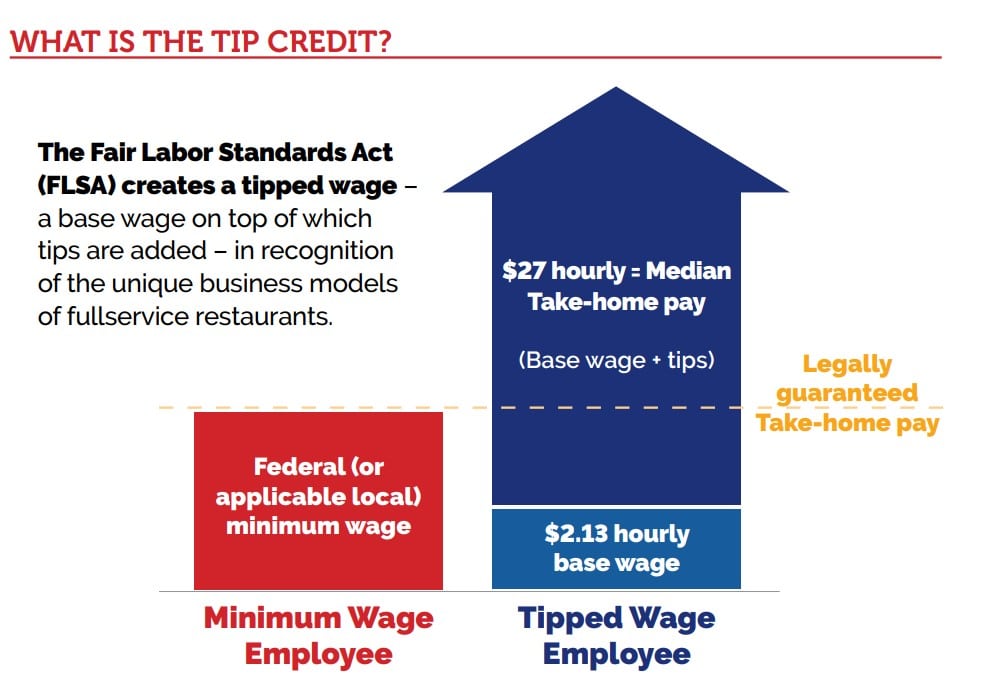
Tipping Intimidation: The Next Stage of Retail Extortion
I was standing at the counter of a Jersey Mike’s sub shop the first time it happened.
My order started on one end of a tray rack with a disinterested woman who rolled her eyes, sighed heavily as I looked at the menu, and then passed it over to the guy who actually started building the sandwich. A minute or so later, he pushed it over to a different woman, who piled on the veggies and splashed on some Mike’s sauce.
The entire process took maybe three minutes.
At the cash register, I pulled out a credit card and stuck it in the slot of the machine, and that’s when I encountered the extortion for the first time.
The screen read, “Add gratuity.”
My choices were 10%, 15%, 20% or a custom tip. On a line at the bottom was a small icon that read, “no tip.” For a long moment, I stood looking at the screen, stunned, but keenly aware that several sets of eyes from behind the counter were watching me. In a moment of haste and confusion, I made the fatal mistake: The cashier and I made eye contact.
In an instant, we exchanged a trove of information. I imagine from experience or training, she knew the reaction to the new tip “suggestion” was unwelcome, but she didn’t care. Her gaze hardened a bit when I hesitated, and her expression conveyed a kind of impatient annoyance. No doubt, if I refused to tip, annoyance would morph into anger and disgust.
“Most of our customers are leaving 20%,” she said loud enough that the people behind me in line could hear.
In my haste to escape the scrutiny, I succumbed to the pressure and hit the 20% icon. Jersey Mike just jabbed me for another couple of bucks.
I remember eating that sandwich without much enjoyment. A tip jar at checkout was one thing, but throwing up a tip screen on a credit card reader was foul play. At Jersey Mike’s, and most other self-serve fast-food joints for that matter, there is no waitstaff. You stand in line, and someone makes your sandwich. They don’t fill up your beverage glass, remove your discarded food wrappers or provide any level of service besides the few minutes it takes to make your $10 sandwich.
So, why are you expected to leave a tip? When you buy a sandwich, what exactly are you paying for if it’s not the process of someone actually making your sandwich?
The Tipping Contagion Spreads
While tipping in nearly every type of restaurant has become endemic, the contagion has spread outside of food and hospitality to nearly every industry that has even a hint of service involved with their process. According to bankrate.com, tipping is expected for any service involving deliveries, hotels, airports, cruise ships, weddings, salons, spas, transportation, childcare, movers and personal services like tattoos.
Bankrate is quick to remind us that tipping should not be considered optional, as the people receiving tips count on the money. They also suggest asking if the tip should be made in cash or if it would be more convenient for the recipient to receive it via Venmo or Zelle.
The Point-of-Sale Tipping Weapon
The proliferation of tipping outside the restaurant industry can be tied to a single development: the advent of point of sale (POS) credit card equipment. It used to be that credit card machinery was the exclusive domain of large retail companies, but now, any person with a business license and a mobile phone can get a portable card reader that provides the same features as the machines in the local supermarket.
The exact date that tip solicitation was added to POS systems is unknown, but initially, the software was restricted to service industries. Some merchants, like Evalon, still have those restrictions in place. However, others, such as Square, offer customers the ability to solicit tips on any system, including the small reader that plugs into a phone.
I talked to a CSR from Square and affirmed that if I was a window installer, for example, I could purchase a system that would allow me to use my phone and solicit tips when my customers paid for my service.
How about a landscaper? Yes.
A retail merchant selling clothing? Yes.
A bookkeeper? Yes
In fact, she told me the only restriction for acquiring their equipment was that the business must be legal.
Why the Tipping Culture is Growing
The POS systems provide the means, but the raw numbers serve as the motivation for the ever-expanding reach of the tipping phenomenon. While the credit card processing industry vigorously guards its tip collection data, the numbers from the National Restaurant Association reveal just how important tips are for retaining workers.

While the guaranteed minimum wage is $7.25/hr nationally, the average tipped wage employee makes $27/hr. The value of tips to both employees and employers is substantial. For employers, they can figure a base wage of $2.13/hr into their budget, which reflects nicely in monthly profit-and-loss statements. In essence, they rely on tips to do the heavy lifting in terms of compensation. For the employee, there is no upward limit to the amount they can make, and when it comes to paying taxes, well…
Tipping Options for Everyone
With those favorable metrics, it’s easy to see why everyone who provides anything remotely resembling a service wants to get in on the act. The new payment software has provided the means, but the intimidation factor in the moment cannot be underestimated. Can there be anything more stress inducing than staring at a computer screen that “suggests” a 20%-30% tip while your date or business associates are standing next to you at the cash register?
So, don’t be surprised the first time you’re checking out of the grocery store, and a screen pops up asking if you would like to leave a tip for the checkout person, who glares at you while you consider whether to hit the “no tip” icon or buckle to the pressure.
Go ahead, stiff the checkout person… you cheapskate.



